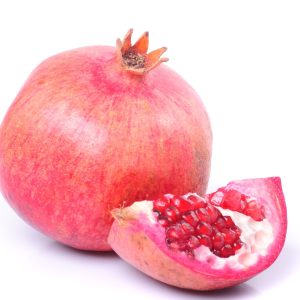The Shallot Advantage: Flavor, History, and How to Cook with Them
Shallots look like onions but taste sweeter and more refined. Their delicate flavor makes them a favorite in kitchens worldwide. Originating in Central and Southwest Asia, shallots have been cultivated for centuries. European Crusaders brought them home from Ascalon, an ancient city in modern-day Israel, giving the shallot its name.
Chefs treasure them for their subtle and versatile flavor. Unlike onions, shallots offer a milder taste with hints of garlic. You can enjoy them raw in vinaigrettes, caramelized to bring out their sweetness, or chopped into sauces. They elevate dishes with their complexity and depth.
How to Use Shallots
They shine in everything from French classics to modern fusion recipes. They pair perfectly with vinegar and herbs like thyme and rosemary. A key ingredient in beurre blanc sauce, they bring a nuanced sweetness to sauces and marinades. Whether sautéed, roasted, or raw, shallots transform ordinary meals into extraordinary experiences.
A Brief History
The history begins in Central and Southwest Asia. They likely originated in regions like Iran, Afghanistan, and Pakistan. From there, they spread across the Mediterranean and the Middle East.
The name “shallot” comes from the ancient city of Ascalon (modern-day Ashkelon in Israel). Crusaders discovered them in the 12th century and introduced them to Europe, where they quickly became beloved. In France, shallots became a cornerstone of classic French cooking, prized for their aromatic yet mild flavor.
Over time, shallots gained global popularity. They became staples in various cuisines and even featured in traditional medicine. In Asia, they were used to aid digestion and boost the immune system. Today, shallots remain essential for their versatility and refined taste.
Cooking with Shallots
Adding them to your cooking enhances flavors effortlessly. Their sweet, subtle profile complements countless ingredients. With their rich history and incredible flavor, shallots prove they’re more than just a kitchen staple—they’re a timeless culinary treasure.
Shallots vs. Onions: Key Differences
Shallots and onions may look alike, but their flavors, textures, and uses set them apart. Here’s how they differ:
- Flavor: Shallots taste milder and sweeter with a hint of garlic. Their delicate flavor works well in subtle dishes. Onions are sharper and more pungent, often taking center stage in recipes.
- Texture: They have a finer, softer texture. They shine raw in vinaigrettes or garnishes and break down smoothly when cooked. Onions, with their firmer texture, hold up better in slow-cooked dishes like stews or soups.
- Size and Shape: They are small and elongated, growing in clusters. Onions are larger, rounder, and form as a single bulb.
- Culinary Use: They bring elegance to sauces, dressings, and delicate dishes. Onions are versatile, starring in everything from caramelized toppings to soup bases.
Though both hail from the allium family, their unique qualities make them essential for different recipes. Use them wisely to elevate your cooking!

Do They Make You Cry?
Yes, chopping shallots can make you tear up, though usually less than onions. Like onions, shallots release sulfur compounds when cut. These compounds form a gas called syn-Propanethial-S-oxide, which irritates your eyes and triggers tears.
However, they cause less irritation because they contain fewer sulfur compounds and have a milder flavor. That said, chopping a large amount can still make your eyes water.
To minimize tears, chill them in the fridge for 15 minutes before cutting. A sharp knife also helps by reducing cell damage and limiting the release of gas.
Why Choose Shallots Over Onions?
They are the go-to choice when you need a sweeter, subtler flavor and a finer texture. Here’s when to reach for shallots:
- Dressings and Vinaigrettes: Their mild flavor doesn’t overpower other ingredients in raw preparations.
- Sauces: Perfect for delicate sauces like beurre blanc, where onions would be too harsh.
- Garnishes: Finely chopped shallots complement seafood or fresh herbs without overwhelming the dish.
- Egg Dishes: Ideal for omelets, quiches, and frittatas, adding a gentle onion note.
- Light Meats: Shallots pair beautifully with fish, chicken, or veal, enhancing flavors without overpowering.
- Caramelizing: Use shallots to add sweet, rich depth to risottos, tartlets, or sandwiches.
Shallots bring complexity and refinement, making them the perfect choice for dishes needing subtle sophistication.
Five Fun Facts About Shallots
- Botanical Double Identity: Shallots are botanically closer to garlic than to onions! Although they resemble onions in appearance and flavor, shallots grow in clusters like garlic, with multiple bulbs attached at the base.
- Ancient Symbolism: In ancient Persia, shallots were considered a symbol of good fortune and were often included in New Year’s celebrations to represent abundance and prosperity.
- Medicinal Uses: Beyond their culinary applications, shallots have been used in traditional medicine for centuries. In Southeast Asia, their antimicrobial properties were believed to help treat colds, boost digestion, and even ward off infections.
- Longer Shelf Life: Shallots have a longer shelf life than most onions. When stored properly in a cool, dark, and dry place, they can last up to six months without spoiling, making them a great pantry staple.
- Unique Antioxidant Profile: Shallots contain higher concentrations of antioxidants than regular onions. They are particularly rich in flavonoids and phenolic compounds, contributing to their health benefits, such as reducing inflammation and supporting heart health.
These fun facts highlight the versatility and fascinating history of shallots, making them even more intriguing to use in your kitchen!












